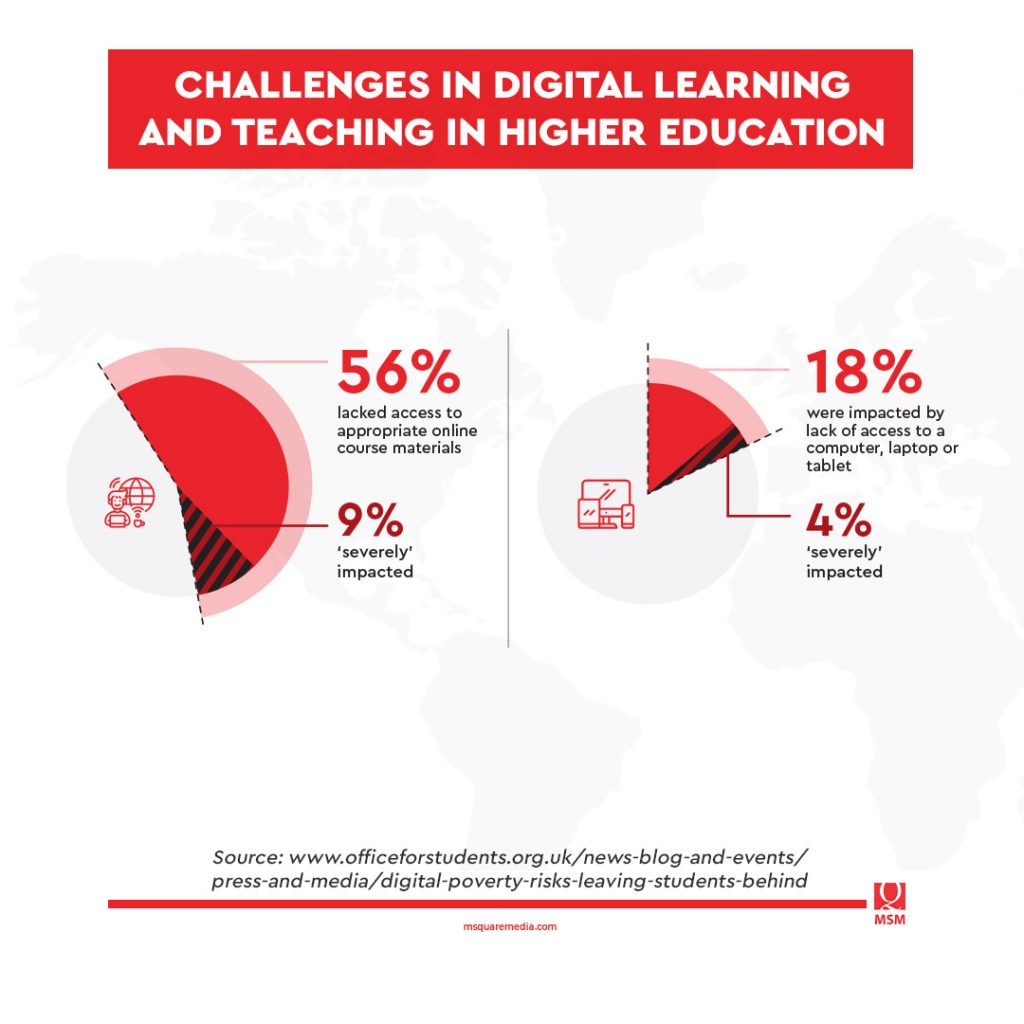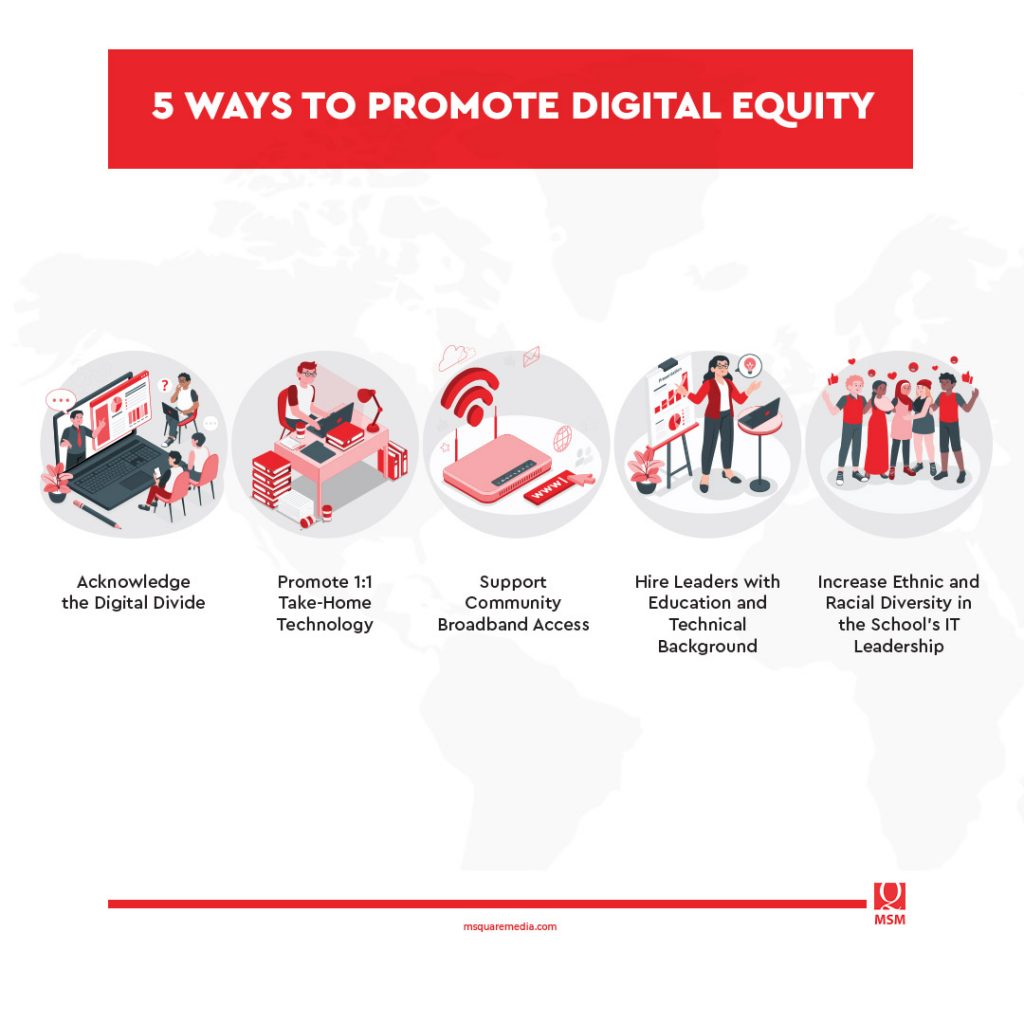In 2018, only 21 percent of students enrolled in online digital programs. They took the online route primarily because it was their only means of acquiring degrees in their chosen field.
Two years later, the COVID-19 pandemic resulted in school closures in 31 countries and reduced academic schedules in 48 countries. This situation has affected more than 800 million students, or more than half of the total student population worldwide, according to a January 2021 report from the United Nations Educational, Scientific and Cultural Organization (UNESCO).
Schools and higher education institutions (HEIs) have now had to step up their games to ensure students can have – and will benefit from – learning continuity.
The most plausible solution is to provide digital learning solutions using online resources. Many countries significantly impacted by the pandemic have done so by transitioning to remote learning.
However, while online learning is the safest option for students, not everyone can benefit from it.

The pandemic has highlighted what has long been in the pipeline among educational institutions and educational technology leaders: digital equity. Issues surrounding lack of access to the internet, reliable wifi and online course materials are put into the spotlight during this period.
In the UK, a student survey conducted in 2020 found that 7% of students reported having insufficient access to the internet, while 12% of students from lower socioeconomic households reported encountering this challenge as well.
Another survey indicated that 56% of students in universities and colleges did not have access to appropriate online course materials.
What is digital equity, exactly? And what role do HEIs play in it?
What Is Digital Equity?
The International Society for Technology in Education describes digital equity as the condition wherein all individuals – regardless of their ethnicity, race, socio-economic class, gender, or disability status – have equal access and opportunity to use digital tools, services, and resources to increase their digital awareness, knowledge, and skills.
Digital equity ensures everyone can fully participate in the society and economy, including employment, education, cultural participation, and essential services.
How Can Higher Education Institutions Promote Digital Equity?
For HEIs, digital equity means giving their students equal access to educational technology, including devices, software, internet connectivity, and educators knowledgeable and skilled enough to efficiently navigate these tools and resources.
Without these, the so-called achievement gap will only widen, which can significantly impact students who are keen on learning but do not have the means to access online education.
How can HEIs address these long-standing issues and promote digital equity? Here are some ways:
1. Acknowledge the Digital Divide
When the coronavirus hit, most publications wrote about school districts and learners lacking the capacity to transition into online learning, with the lack of high-speed internet connectivity and devices being the primary concern.
This issue has been around since before the pandemic pushed students and teachers into virtual classrooms. In a 2018 Pew Research Center study, as much as 17 percent of students in the United States were found to lack internet access at home, making it impossible for them to complete their homework.
HEIs need to acknowledge the digital divide as a pressing issue facing students around the world. Only when the digital divide is recognized can HEIs and policymakers work toward digital equity.

2. Promote 1:1 Take-Home Technology
The use of educational devices can encourage access to digital instructional resources. It is a powerful way to augment and promote blended learning. However, not all learning institutions have shown support for this initiative.
In the United States, Maine is the lone state that provides 1:1 take-home technology under the Maine Learning Technology Initiative (MLTI. For the rest of the states, it depends on the school districts, and only a handful have promoted the use of take-home laptops and Chromebooks for their students.
HEIs can encourage widespread adoption of the program, including covering insurance and offering device installment payments for students needing payment assistance. They can also partner with open educational resources to improve digital learning.
3. Support Community Broadband Access
One of the best ways to implement full digital equity is ensuring that each student has home connectivity. Having take-home technology would be pointless if students cannot access the learning resources.
One way to support broadband access is to provide students with a connected device. However, this can be cost-limiting.
A better option would be to promote home connectivity by building community partnerships with affordable broadband services. They can also take part in mapping communities for the installation of Wi-Fi hotspots.
One example is the effort made by the Santa Ana Unified School District in Orange County, California.
In 2015, Santa Ana’s education leaders made internet connectivity accessible to its students by boosting their school’s signal strength to cover a wider area and include nearby apartment units. They also partnered with the city to improve Wi-Fi hotspot access. Additionally, they allowed school libraries to open wireless hotspots for home use, giving several students access to the internet.
HEIs can follow this example and work with nearby communities to provide broadband access to students taking classes online.
4. Hire Leaders with Education and Technical Background
Most HEIs lean towards hiring leaders with purely educational backgrounds. In the current state of things, having leaders with education and technical experience is a must. Not only will they be able to address urgent academic issues, but they will also be better at understanding pressing cybersecurity and IT issues.
Most people think that cybercrime organisations focus on corporate targets with devoted resources for cyber defence. However, this is not the case. Nefarious individuals have set their sights on vulnerable targets, such as universities and school districts.
Implementing cybersecurity strategies, such as incorporating single sign-on options, can help HEIs ensure that student data is monitored and protected efficiently. It also helps if institutions have a proper background on doing content filtering to ensure compliance with data privacy laws, such as the European Union’s General Data Protection Regulation.
5. Increase Ethnic and Racial Diversity in the School’s IT Leadership
In addition to hiring IT educators, HEIs should also increase their roster of diverse leaders. Across public and private institutions, a significant lack of minorities in leadership positions remains a pervasive problem.
According to the 2019 IT Leadership Survey Report of the Consortium for School Networking, IT leaders are ethnically and racially different from the population they serve, resulting in poor representation of students’ needs when it comes to educational access.
Online education is bound to continue in the years to come, and HEIs can be a critical partner to address gaps in the growing digital divide. Acknowledging the digital divide, promoting take home technology, supporting community connectivity, hiring IT leaders, and increasing ethnic and racial diversity are just some strategies that HEIs can employ to ensure no student is left behind. (SUNEETHA QURESHI)

SUNEETHA QURESHI
MSM President - Global
Suneetha has worked for 15 years in the international education sector and 25 years overall, including her work for other industries. As president of MSM, she fortifies its business development outreach globally, particularly in the face of MSM’s foray into edtech-based recruitment via MSM Unify. She preserves the premium, value-adding services provided to each MSM partner institute, including dedicated teams on the ground, agent management, lead generation and inquiry management, application pre-screening, and student and parent support through pioneering pre-departure briefing sessions.
She has an impeccable track record of successfully launching the representative offices in Asia and Africa of many North American and European higher education institutions. Her key strengths include hiring, training, and developing teams as evidenced by the successful results of the dedicated in-country college and university client teams.
Suneetha also has taken the lead in developing several initiatives at MSM, including building robust standard operating procedures, the Rise ‘n Shine team engagement platform, and the organization’s data analytics and audit segments.
Data Sources:
‘Digital poverty’ risks leaving students behind. Retrieved from:
https://www.govtech.com/education/Digital-Equity-Cybersecurity-Are-Key-Concerns-in-Ed-Tech.html
https://www.cosn.org/sites/default/files/_CoSN_ITLdrship_Report_2019_Final.pdf
https://eric.ed.gov/?id=ED497214
https://www.internetsociety.org/resources/doc/2017/internet-access-and-education/
http://www.maine.gov/doe/Learning/LTT/MLTI/About
Internet Access and Education: Key considerations for policy makers

